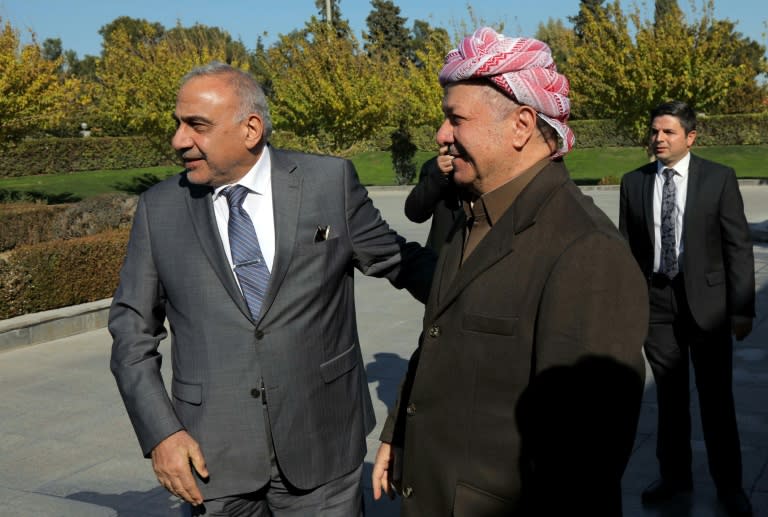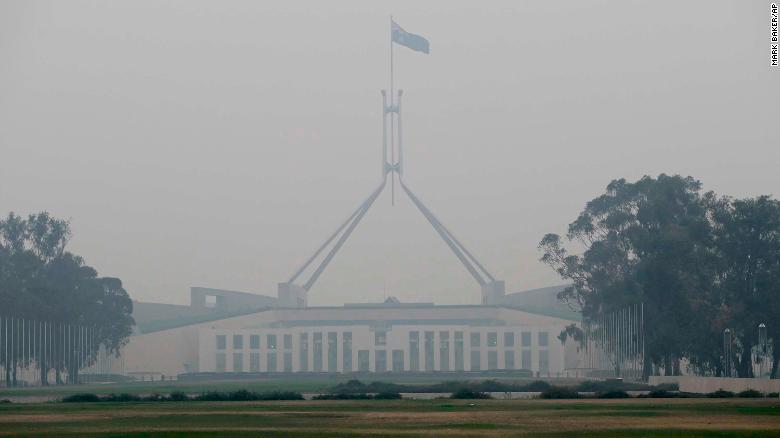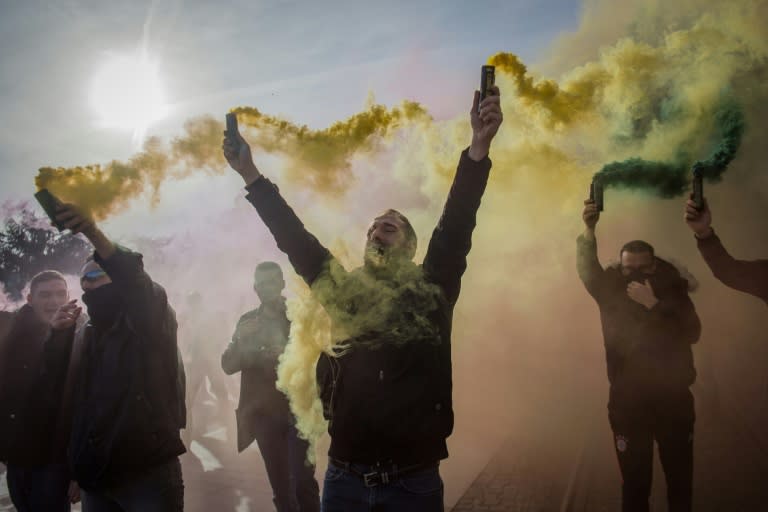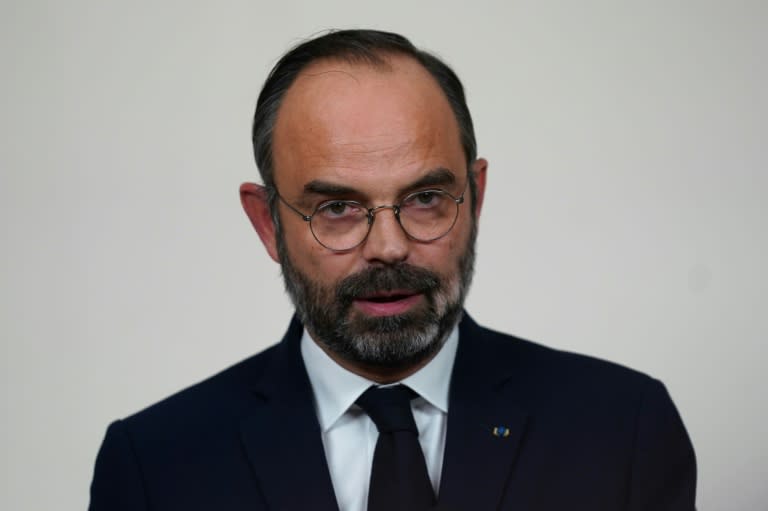FORD NATION
Canada province says sorry after training mistake sparks false nuclear alert
NUCLEAR OPPS AND SOME FOLKS COULD CARE LESS
By David Ljunggren, Reuters•January 12, 2020


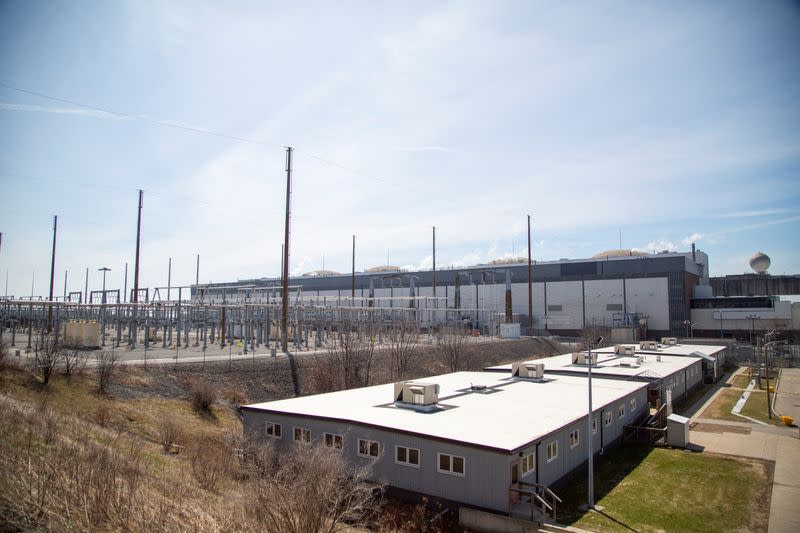
1 / 7
Canada province says sorry after training mistake sparks false nuclear alert
The Pickering Nuclear Generating Station is seen in an undated aerial photo near Toronto
By David Ljunggren
OTTAWA (Reuters) - The Canadian province of Ontario on Sunday apologized for wrongly raising the alarm about an incident at a massive nuclear power station near Toronto and blamed a training exercise mistake.
Angry local mayors demanded an inquiry, saying the emergency message about the ageing Pickering plant had caused unnecessary distress.
At around 7:30 a.m. ET (1230 GMT) cell phone users across Ontario - the most populous of Canada's 10 provinces - received an alert about the supposed incident. Less than an hour later the Ontario Power Generation (OPG) authority said the message had been a mistake.
"The alert was issued in error to the public during a routine training exercise," Ontario's Solicitor-General Sylvia Jones said in a statement.
"The government of Ontario sincerely apologizes for raising public concern and has begun a full investigation to determine how this error happened."
The initial message said there had been no abnormal leak of activity from the plant, which is located on the shores of Lake Ontario some 50 km (30 miles) east of downtown Toronto.
Pickering Mayor Dave Ryan said on Twitter that locals had been very troubled and added: "I have spoken to the province, and am demanding that a full investigation take place".
Toronto Mayor John Tory complained that many of the city's 3 million residents had been unnecessarily alarmed and also pushed for a probe, citing what he said were "far too many unanswered questions".
Human error during a training exercise was also blamed for an incident in Hawaii in January 2018 when authorities issued a false alert about an impending ballistic missile attack.
OPG was not immediately available for comment.
The plant came online in 1971 and has a power-generating capacity of 3,100 megawatts when fully active. It is scheduled to be shut down in 2024.
"OPG has reminded everyone that they're running an unneeded and aging nuclear station next to Toronto," said Shawn-Patrick Stensil, a program director at Greenpeace Canada.
Some social media users posted images from the hit cartoon series the Simpsons, which features a nuclear power plant plagued by safety violations.
Cam Guthrie, the mayor of Guelph, a city west of Toronto, said "sending out a 'hey there was an issue at a nuclear plant but we're not going to tell you about it specifically and it's not a big deal' emergency text, is terrible".
(Reporting by David Ljunggren; Editing by Frances Kerry and Lisa Shumaker)
What Ontario can learn from Hawaii's false report of an imminent catastrophe
Ryan Flanagan CTVNews.ca Published Sunday, January 12, 2020
TORONTO -- Ontarians' reactions to an emergency alert stating there had been an incident at the Pickering Nuclear Generating Station ran the gamut from fear to confusion to – eventually – outrage.
Ted Gruetzner's first instinct was a little different. He was puzzled, yes, but he also had a strong suspicion that there was no cause for alarm.
"I have the luxury of knowing how these things work, and it struck me as something that [was] a little bit off," Gruetzner said Sunday on CTV News Channel.
Related Stories
Emergency alert about Ont. nuclear plant was sent by mistake
Nuclear power plant alert: People miffed about mistaken notification
Related Links
Study: Anxiety on Twitter following the 2018 Hawaii false missile alert
As a former vice-president of Ontario Power Generation – which operates the power plant in Pickering, Ont. – and someone still heavily focused on the energy sector through his work with the Global Public Affairs consulting firm, Gruetzner felt that the message didn't ring true.
Few of those who received the alert have Gruetzner's background and expertise, though. And for that group, Gruetzner says, it's not at all surprising that the message caused panic.
"You're going to want to make sure that you're getting your message very clear, giving clear direction on what people should worry about and what they should do – and I think that message wasn't very clear this morning," he said.
"It created a lot of uncertainty and unease."
Pickering Mayor Dave Ryan also spoke of the mental health impacts of the false alarm Sunday morning.
"This has a huge impact on our community as a whole – the obvious anxiety that is uncalled for," he said in an interview with CP24.
Anxiety, sometimes rising to the level of post-traumatic stress disorder, has been shown to increase following false alarms of imminent danger. One of the most notable such mishaps occurred almost exactly two years before Sunday's alert.
On Jan. 13, 2018, an emergency alert was automatically transmitted over every radio and TV signal in Hawaii, and sent to every phone in the state. The alert advised recipients to seek shelter and included an all-caps message declaring "NOT A DRILL."
It took 38 minutes for authorities to send a follow-up message stating that the initial alert was a false alarm.
That 38-minute gap was more than enough for Hawaiians' panic levels to shoot through the roof, according to a 2019 paper in the American Psychologist journal.
Researchers from the University of California scraped data from Twitter, examining more than 1.2 million tweets from 14,830 accounts believed to be based in Hawaii over a two-month span including the day of the false alarm.
By searching for keywords such as "worried" and "afraid," they found "a marked increase in anxiety among likely Hawaii residents that lingered well after the missile threat was dispelled," as Nickolas M. Jones and Roxane Cohen Silver wrote.
The anxiety levels climbed from the moment the alert was issued until Hawaiians received the follow-up false alarm message – even though the state's emergency management office and local politicians tweeted during that period that there was no real emergency. As one Twitter user put it, "who knows who's right?"
Days after it became clear there never had been a threat, the Twitter users who had been expressing the least anxiety before the alert continued to show a big increase in their anxiety levels. Those who had already displayed signs of anxiety, conversely, had stopped doing so – which Jones and Silver say could be a sign of "near-miss relief" or may mean that they had re-evaluated the things which caused them anxiety before the alert.
"Users in the high prealert anxiety group may have recognized how much worse things could have been had the missile threat been real," they wrote.
The researchers note that there are limitations to their findings: Twitter skews younger and more urban than the general population, word use is a very generalized way to track anxiety, and there is no guarantee every tweet they logged came from Hawaii.
Still, much of their study reads as if it could be a warning for the Ontario government in the wake of Sunday's erroneous alert, which the Ontario government has blamed on an accident during a "routine training exercise." Researchers warn that false alarms can erode the credibility of an organization and make people less inclined to believe future warnings. For example, a 2009 study found that residents of American areas with significant histories of false tornado alarms are less likely to trust the U.S. National Weather Service – and more likely to die when tornadoes do strike.
"When officials charged with disseminating information about impending threats falter, this might lead to a disaster … and there may be a number of unintended consequences," they wrote.
Jones and Silver did find some reasons for hope. They note that after a public trauma, anxiety levels tend to decrease as authorities and media explain exactly what has happened and what is being done to stop it from happening again.
"When emergency systems falter, research shows that credibility loss can be mitigated by a clear explanation of why the false alarm occurred in the first place," they wrote.
In Hawaii, that took the form of the state creating new safeguards to prevent one person from sending an emergency alert without approval. Media reports about past issues involving the employee who sent the alert "may have assured the public that the entire affair was a fluke," Jones and Silver wrote.
Gruetzner said he hoped to see similar public communications efforts in Ontario as the investigation into Sunday's false alarm unfolds.
"You don't want to create more questions than you answer with your communications," he said.
"People have to have faith in the system, and I think they're going to do what they can to address the problem."
CBC Explains · Posted: Jan 12, 2020

An alert warning Ontario residents of an unspecified incident at the Pickering Nuclear Generating Station early Sunday morning was sent in error, Ontario Power Generation said. (Frank Gunn/The Canadian Press)
Early Sunday morning, an emergency message was sent across Ontario alerting residents about an incident at the Pickering nuclear generating station east of Toronto.
The alert turned out to be an error but it raises questions about how prepared the province is in case of a nuclear incident.
Does Ontario have a plan for a nuclear emergency?
Yes. The Provincial Nuclear Emergency Response Plan, a 200-page document, dictates instructions to every municipality that has a nuclear facility within their jurisdiction.
It was last revised in 2017. Each of the five nuclear facilities located in and around Ontario also have their own plans.
What happens immediately following an incident?
If there's an incident at a nuclear facility, Ontario Power Generation would notify local and provincial governments within 15 minutes.
Ontario government apologizes for alert about Pickering nuclear plant incident sent 'in error'
False alert about Pickering nuclear plant caused widespread alarm, but some residents 'not worried'
The provincial government's Emergency Management Ontario, which falls under the Ministry of the Solicitor General, is then responsible for public safety during nuclear emergencies and would determine the appropriate level of public action.
It will administer the Provincial Nuclear Emergency Response Plan and has overall responsibility for managing the off-site response to nuclear emergencies.
Local emergency responders: police, fire and ambulance crews, make sure emergency plans are implemented properly.
What kind of alerts are issued?
Guidelines and plans need to be in place to alert people within three kilometres of each reactor, said James Kilgour, director of Durham Emergency Management.
For example, in the immediate areas around Bruce Power, Pickering and Darlington, air sirens are utilized, he said.
Within 10 kilometres, residents receive indoor alerts — calls to their homes.
Kilgour said his region utilizes an auto-dialling system that calls everybody on landlines within 10 kilometres of the plant.

A jogger runs along the beach past the Pickering Nuclear Generating Station, in Pickering, Ont., on Sunday. (Frank Gunn/The Canadian Press)
The province controls the alert ready system, or amber alert, to contact mobile phone users.
Toronto also would use an indoor alert system — the city doesn't need sirens because it is not within three kilometres of the nearest plant.
Also, emergency bulletins would be issued regularly to provide updated information through radio, television and social media.
What about evacuations?
Those would likely occur in areas immediately surrounding a reactor facility, but additional evacuations of an expanded area could also be necessary as circumstances change, particularly if there are shifts in the wind.
"If we need to evacuate, the province makes the decision ... and then multiple agencies come together to start to operationalize the traffic movement," Kilgour said.
However, some people may be directed to remain indoors for a relatively short period of time if it's deemed that evacuating is too dangerous due to circumstances such as severe weather.
Are there any preparations for food contamination?
In case of a risk of contamination of food, water, milk, or commodities, the province may advise the public to take a number of measures. Those include protecting drinking water supplies that directly use rainwater, and restricting consumption and distribution of non-essential local produce, milk from grazing animals, rainwater and animal feed.
Can anything be used to help prevent radiation poisoning?
According to the Canadian Nuclear Safety Commission, potassium iodide can be used to protect the thyroid gland from radioactive iodine that may be released into the air in the event of a radiological emergency.
In 2015, the Canadian Nuclear Safety Commission and Ontario government agreed that every house, resident and business within 10 kilometres of all nuclear plants in Ontario would receive a free stock or inventory of potassium iodide. Kilgour said new packages are mailed out to residents every six months.

Potassium iodide can be used to protect the thyroid gland from radioactive iodine that may be released into the air in the event of a radiological emergency, according to the Canadian Nuclear Safety Commission. ( Irene Thomaidis/CBC)
People who live between 10 and 50 kilometres from a plant who want potassium idodide, can order it online.
Residents can type in their postal code, and they will be informed as to whether they live within an area eligible for a free package. If so, it will be mailed out.
Who determines whether people should ingest the potassium iodide?
The chief medical officer of the province of Ontario, in consultation with other officials, decides whether or not people need to ingest potassium iodide.
According to the provincial plan, pills should be ingested two to six hours prior to or just after exposure to radiation. A single dose lasts approximately 24 hours.
Do municipalities run drills?
Yes. In Durham, for example, the region runs two drills a year, one in the spring and one in the fall, which include blaring sirens and indoor alerting, Kilgour said.
"That is accompanied by heavy public education and awareness, contacting the media, contacting the public to let them know that we're conducting these [tests]," he said.
CBC's Journalistic Standards and Practices|About CBC NewsReport Typo or Error|Send Feedback
RELATED STORIES
Ontario government apologizes for alert about Pickering nuclear plant incident sent 'in error'


